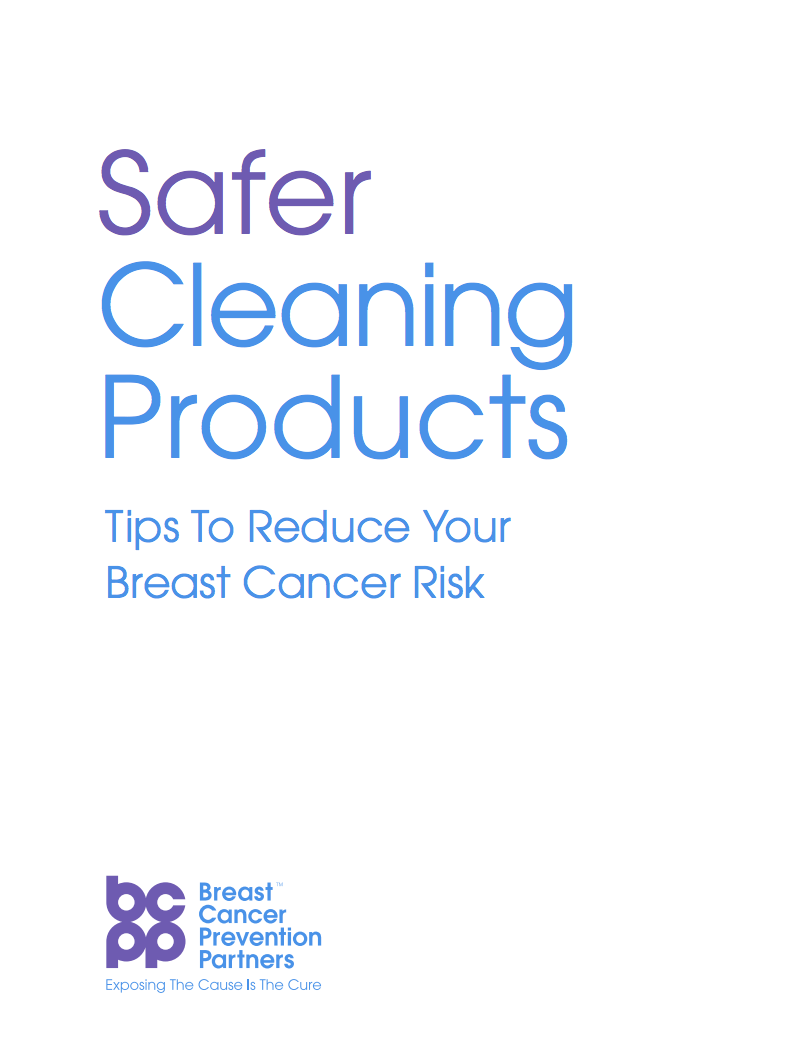Tips for Prevention
Cleaning Product Tips
Cleaning product labels are often incomplete. Protect yourself and your family from exposure to toxic chemicals in everyday cleaning products.
Download our tip card
1. Find safer cleaning products
Many conventional cleaning products take away dirt but leave behind harmful chemicals. Use online databases like EWG’s Guide to Healthy Cleaning to find safer cleaning products that publicly disclose ingredients.
2. If you don’t know what’s in it, don’t use it
Labeling loopholes allow companies to avoid disclosing ingredients on cleaning product labels. Some cleaning product labels contain incomplete or misleading ingredient lists, so don’t be fooled by a short ingredient list. Only buy and use cleaning products that disclose all ingredients on the product label to avoid possible exposure to harmful chemicals.
3. Avoid fragrance
“Fragrance” is a cocktail of ingredients and can include dozens or more potentially harmful chemicals, and can be found in most cleaning products. Avoid purchasing and using cleaning products with fragrance, unless you know what is in them.
4. Clean smarter with a wet towel
Capture more grime in house dust by cleaning with a wet towel instead of using a dry cloth or duster. Avoid stirring up dust, where chemicals of concern accumulate.
5. Use a clean vacuum
Vacuum with a HEPA filter to reduce sending chemicals into the air, and then your lungs.
6. Clean more naturally
Use baking soda to neutralize odors and soak up dampness, and vinegar to clean and deodorize. Add a cup of vinegar to your laundry to brighten up whites, remove odors, and lift tougher grime off fabrics. Add a few drops of your favorite citrus juice (think lemons, limes, oranges) or essential oils (try lavender, peppermint, eucalyptus) to a vinegar-based cleaning spray to fill your home with a fresh scent of your choice. Green your space with plants to clean the air you breathe.
7. Exchange old foam and furniture that contains chemical flame retardants
Start replacing your old furniture, carpet, and foam padding with naturally flame-retardant materials like wool, cotton, and hardwood. These materials reach the point of combustion more slowly than synthetic materials treated with flame retardants. Choose furniture that isn’t treated with chemical flame retardants.
8. Take off shoes at the door
Leave the outside, outside. Keep your home clean by avoiding tracking in toxic chemicals on your shoes.
FEATURED VIDEO
BCPP: Exposing the Cause is the Cure
We're preventing breast cancer before it starts by eliminating our exposure to toxic chemicals and radiation.

